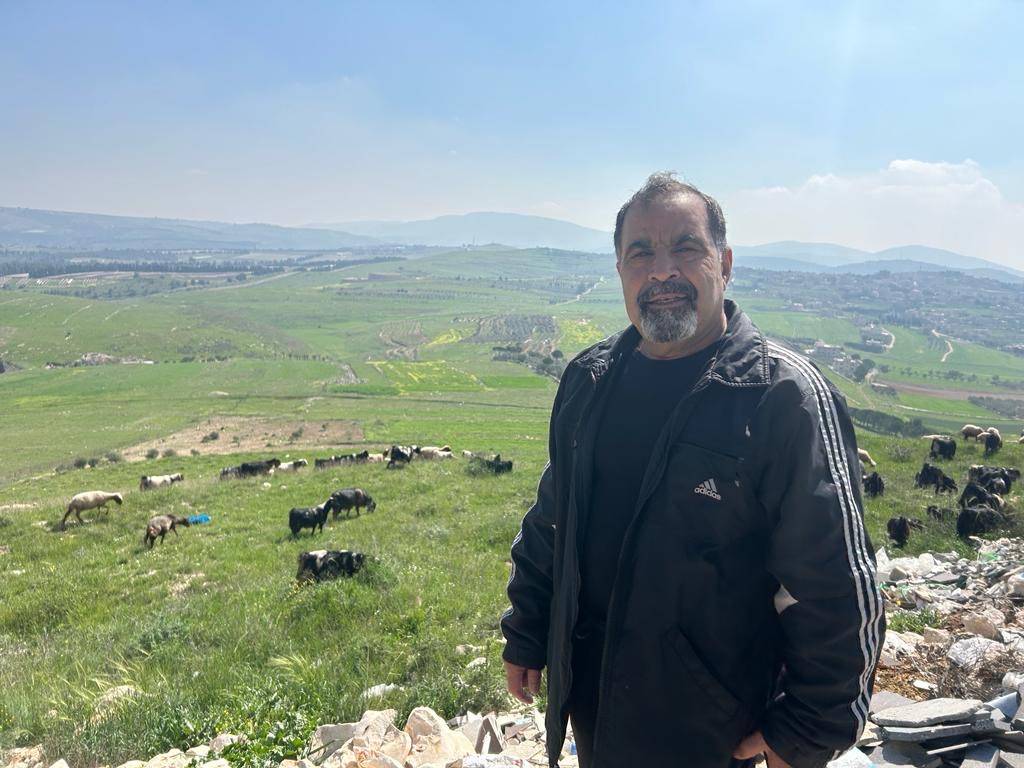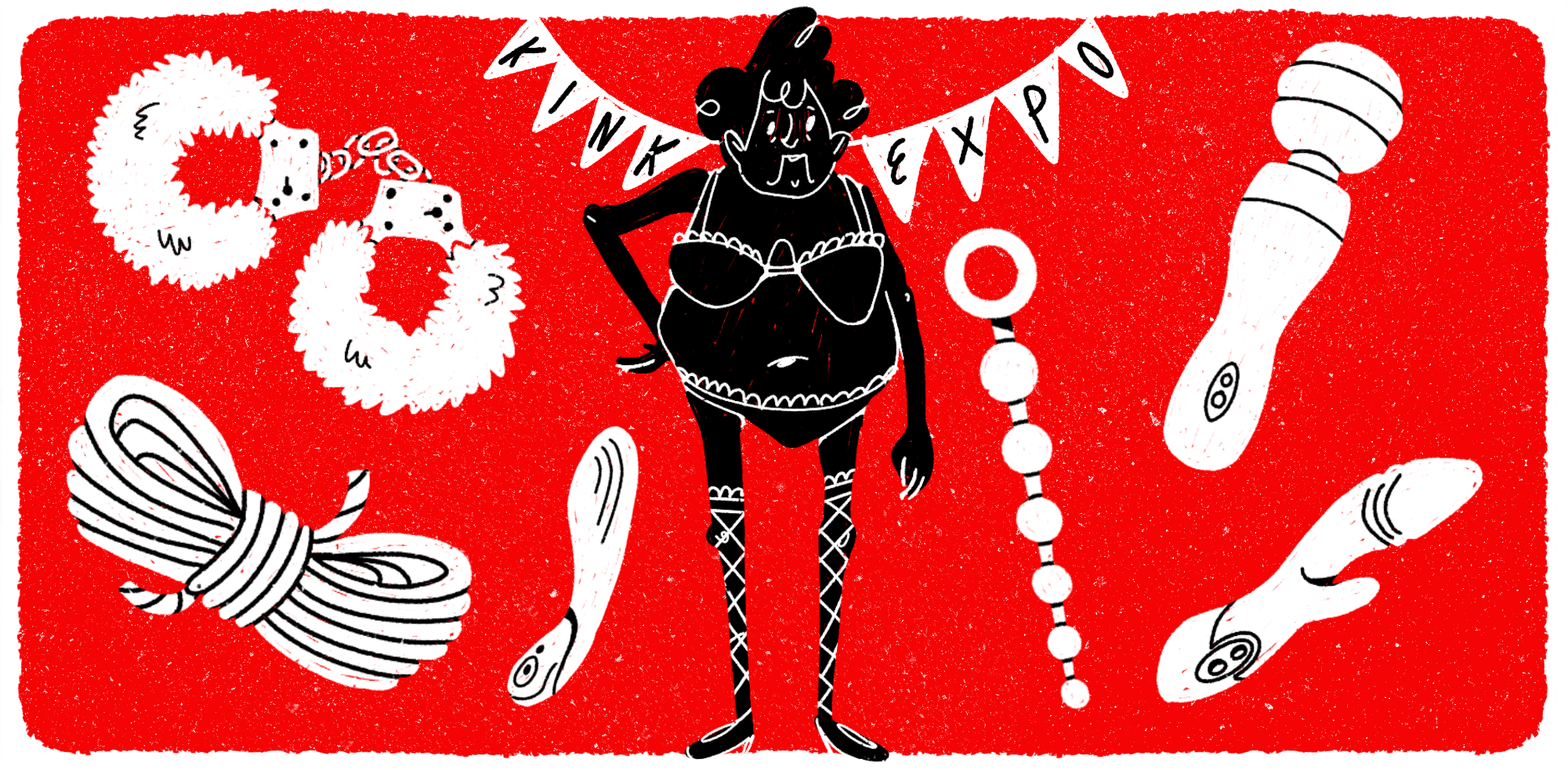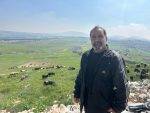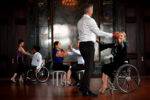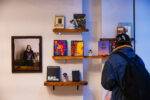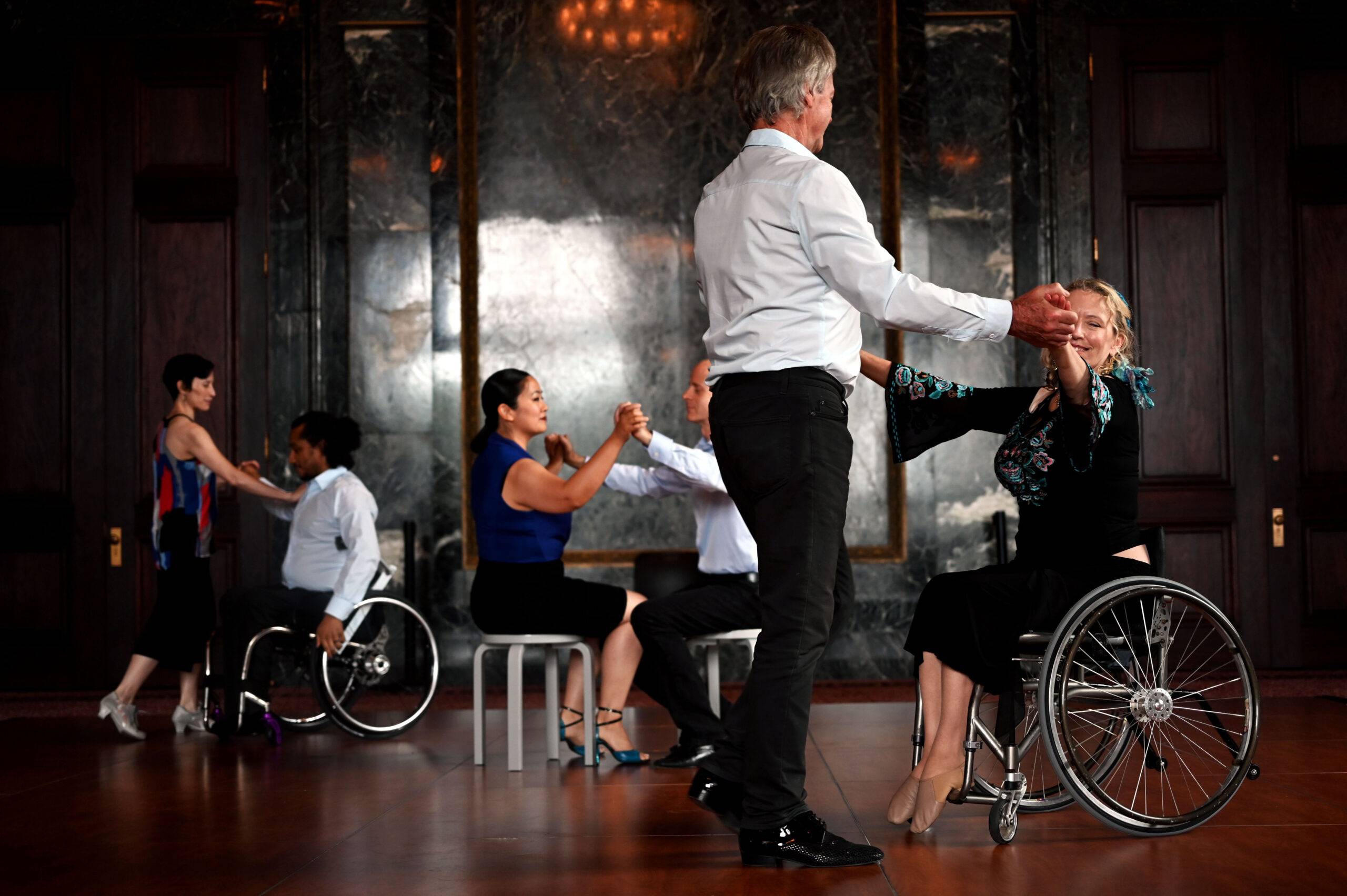
Tango 21 Dance Theater performing, “El Choclo,” an Argentine tango. Three couples, two of the individuals being wheelchair users, performed the tango in unison. The performers, including Ladonna Freidheim (pictured on the far right), have been practicing and perfecting this ongoing project to open up the art of tango to both seated and standing dancers. After the dance was finished, they also showed off in-depth, the custom wheelchair they have designed to be able to allow for better movements and embraces. Photographs by Sidne K. Gard
On Sat., July 22, 2023, the first annual Chicago DisFest was held at the Chicago Cultural Center. The free event invited the Chicago community in to celebrate disabled artists, performers, and musicians. DisFest featured live music, dance, visual art, theater, film, and all activities for people of all physical and mental abilities.
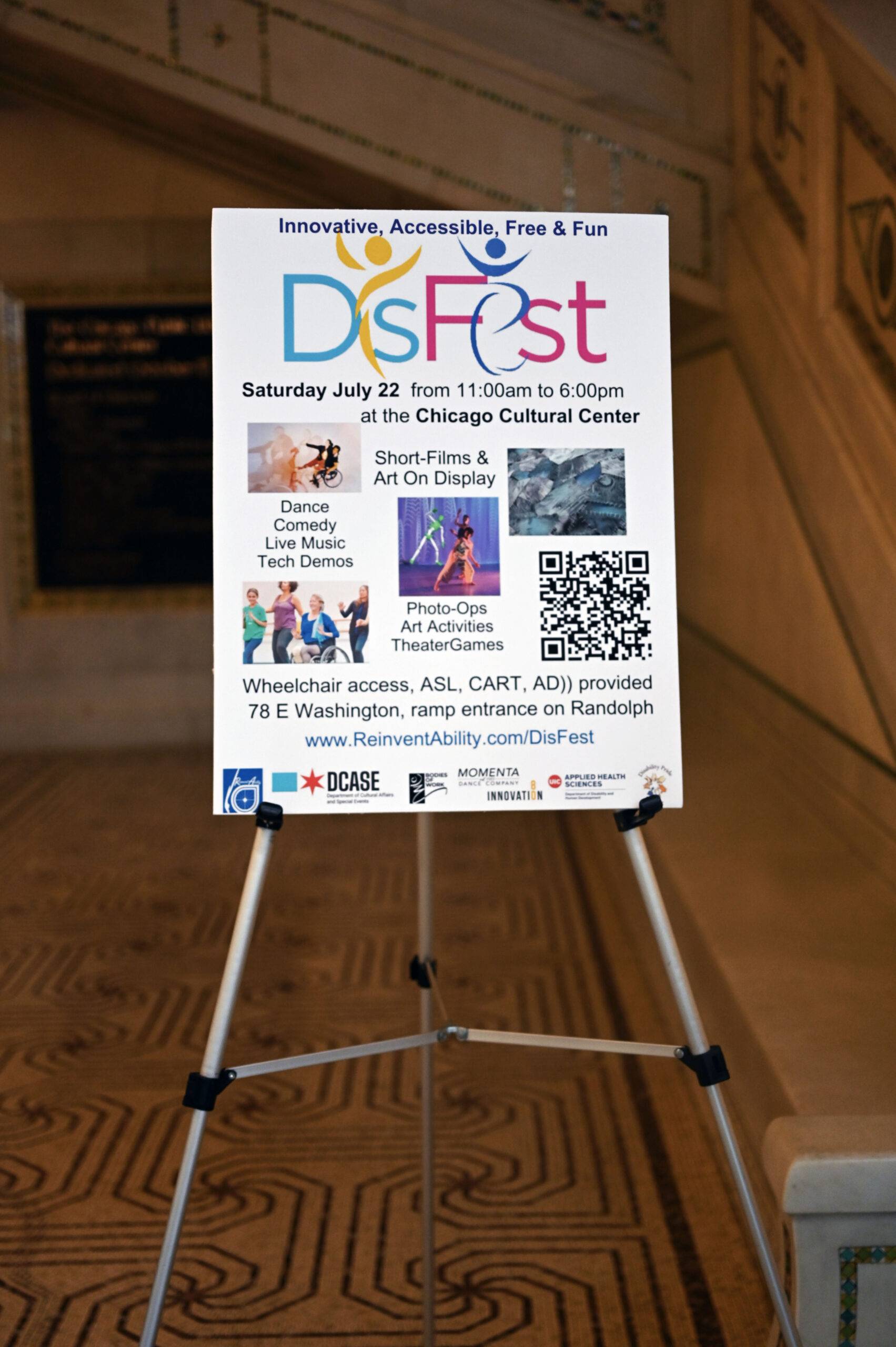
The sign providing information about DisFest that was placed at the entrance of the Chicago Cultural Center. Accessibility information such as wheelchair access is noted as well as the types of events on display at the festival. Near this larger sign were smaller signs indicating how to get to the various rooms of the event either by stairs or elevator.
DisFest is the latest project by ReinventAbility, a non-profit founded by Ladonna Freidheim, a Chicago-based disabled dancer. who holds a master’s degree in occupational therapy Freidheim and her team at ReinventAbility host dance classes, dance parties, and inclusion seminars centered around joy, exercise, and community for “everyBody.”
DisFest is their newest addition to their programming, and it is planned to be an annual event.
At this year’s DisFest, the organizers ensured that there was wheelchair access, American Sign Language interpreters, captions for both live and pre-recorded content, audio descriptions, a designated quiet room, and even a virtual option for attending the festival for all attendees.
The festival took over two floors of the Chicago Cultural Center. The first floor featured a screening room for several short films by disabled filmmakers or about disabled individuals. The films included work by musician Gaelynn Lea, a marionette-styled recorded dance performance by the MOMENTA Dance Company, work by director Ryan Mayers, and a story written by Supreme Court Justice Sonia Sotomayor.
The first floor also housed digital displays of work by composer Molly Joyce and visual artist Genevieve Ramos (who is currently working on her certificate in painting at SAIC). These two artists’ work was in a way the transition between the first-floor space for short films and the second-floor performance space, as they bookended each side of the staircase while still being accessible to those not able to walk upstairs.

A large TV screen playing Molly Joyce’s piece titled “Perspective.” The project is ongoing, but the basic premise is Joyce talking to various people with disabilities and asking them about what access, care, interdependence, etc. means to them. In this version of “Perspective,” the top of the screen, reads out the question, in this case, “What is Interdependence for you?” The bottom of the screen then shows the interviewee’s response, which is that “all of our lives are facilitated by multiple others.”
The main events of the festival took place on the second floor where a large room was used for performances of all kinds. It was one of the early performances of the day, an original song by Chicago singer-songwriter Ahona Mazumder, dedicated to “folks who live life outside society’s definition of ‘standard’” that really set the tone for the event.

Ahona Mazumder stands in front of a microphone and holds an acoustic guitar as she sings the chorus to her song,“Outside the Lines.”
From 2:00 pm to 5:30 pm, performers sang, danced, and pulled audience members in for interactive theater games with short breaks between each performance. The performances were emceed by playwright and performer, Tekki Lomnicki who brought an upbeat energy to the stage. The space was welcoming and celebratory of bodies and minds of all kinds.
As a disabled artist and writer myself, I must admit I’m not sure I’ve ever been in a room with so many different disabled individuals, and certainly never in one filled with so much joy. It was quite a moving experience to see disabled narratives, feelings, stories, and bodies on full display in an authentic manner.
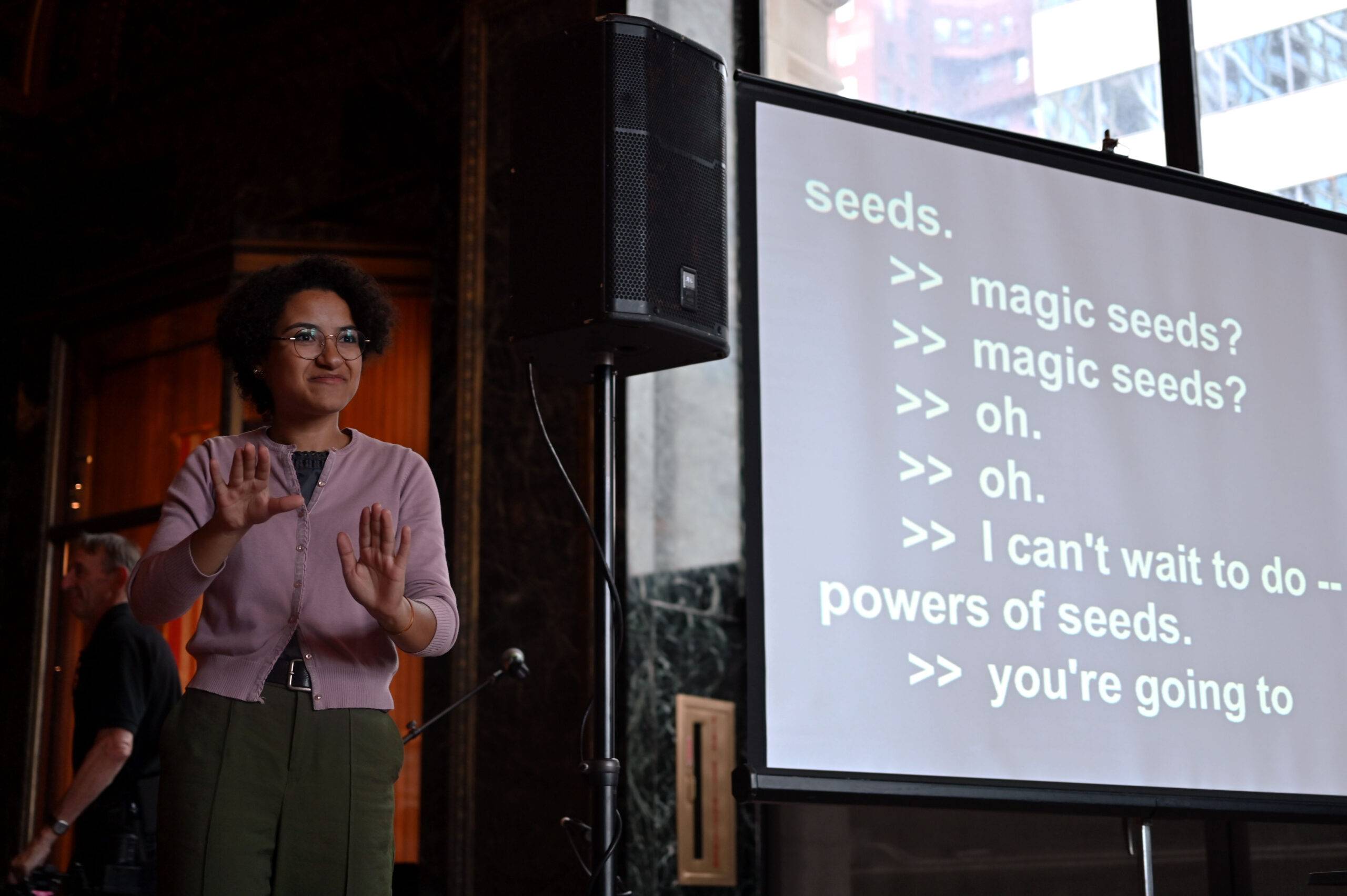
Accompanying every performance was an American Sign Language interpreter as well as a large projection screen outputting a transcript in real time.

Ashaand Simone and Luke Greeff performing their dance routine, “Bo(ix)y(e) Division,” The dance is an intimate duet centered around trans-masculine identities and experiences. The dance was an hour long with the intention of pushing the performers to their physical limits. It is a performance of vulnerability, metamorphosis, and exhaustion.
After the main stage performances, interactive workshops were held that the audience could participate: hip-hop lessons, demonstrations of new technology, and even to a series of improv theater games.
Stepping (or rolling) outside the main performance room, lead you into an area with a handful of engaging activities as well as some very interesting works of visual art. There was a table to make buttons. There were surveys from the city of Chicago to fill out about what other kinds of disability and accessibility art-based workshops and events you would be interested in seeing and attending. One table was providing information about steps to take to be more inclusive in your day-to-day life. Two different live harpists took turns playing music for the festivalgoers, and a table nearby was set up for people to stop and draw their own interpretations of harp songs.
The main stage performances were wonderful in their own right, but the smaller activities outside the main stage provided a very tactile experience which was a nice contrast to the visual and auditory realm of performance.
And amidst all of this was Chicago artist, Deanna Kruger, and her series of acrylic paintings on recycled XRay/MRI film known as “Shards.” Kruger had a table set up where she and one of her students were there to talk about her work as well as to give folks a chance to try cutting and stapling together the XRay/MRI film themselves.
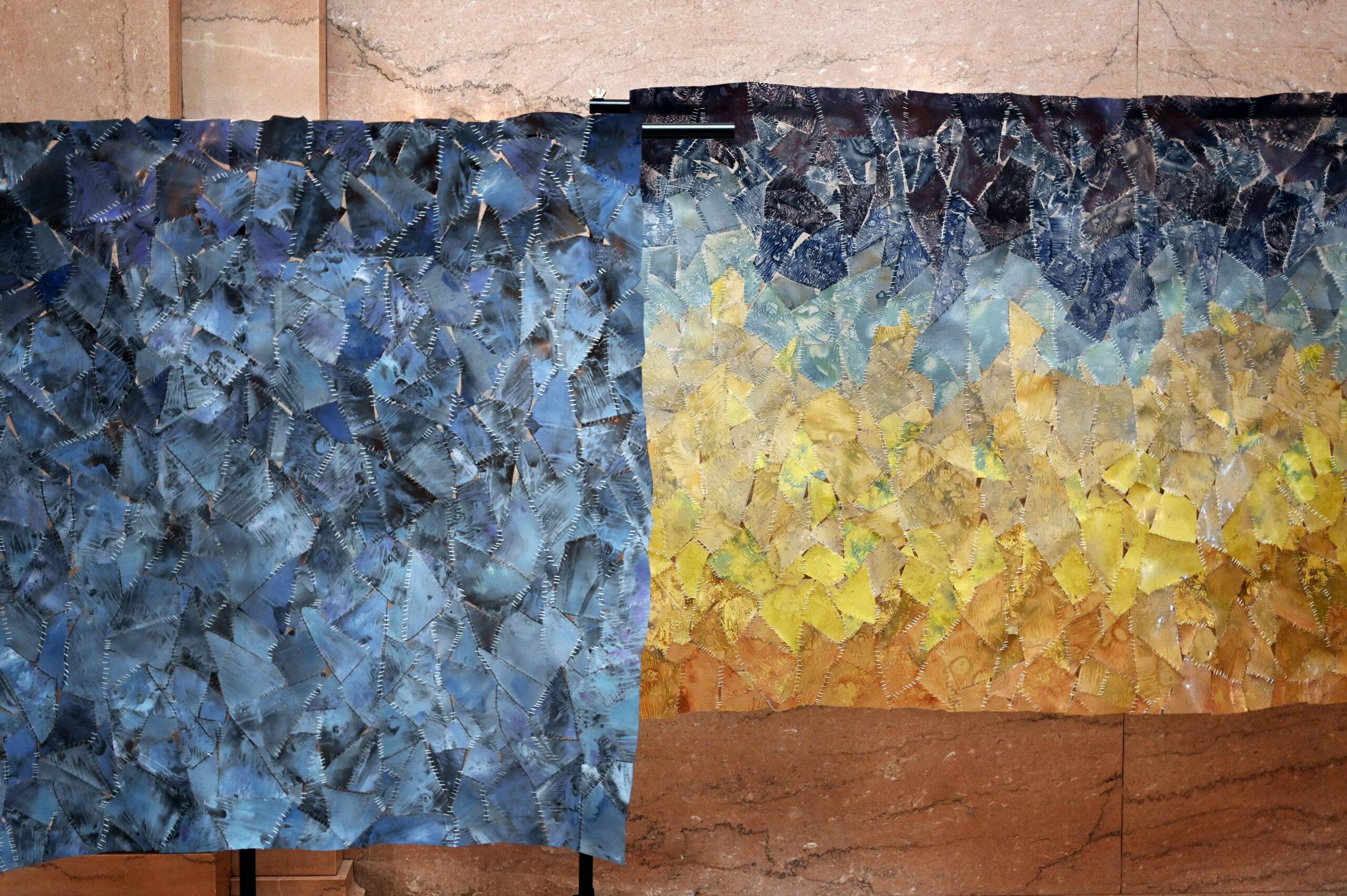
Two paintings of Deanna Kruger’s “Shard” series. The painting on the left is titled, “Amphitrite” and is 45 by 63 inches. The painting on the right is “Gaea” and is 44 by 63 inches.
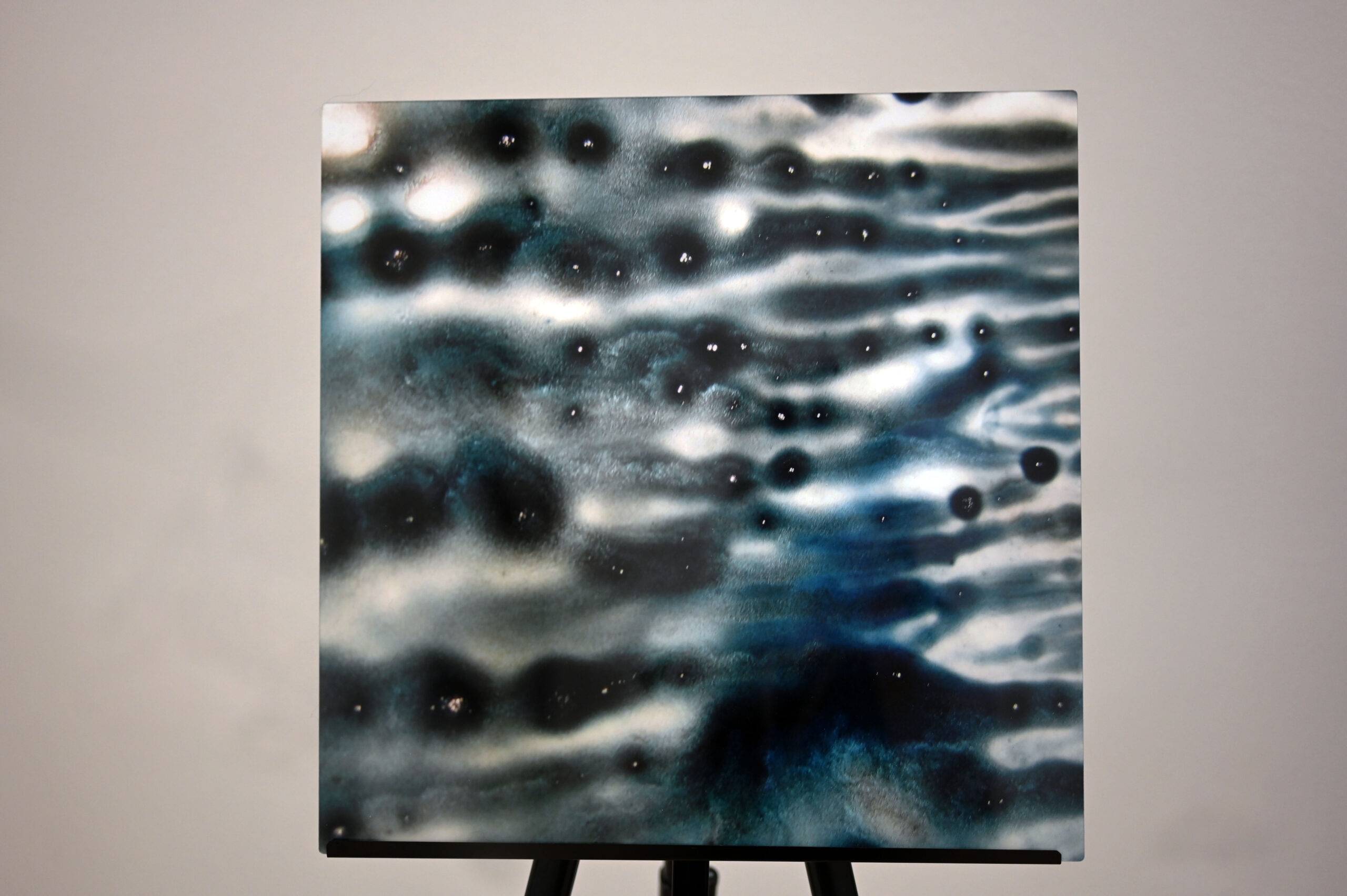
Deanna Kruger’s piece titled, “Nocturne.” It is 16 by 16 inches and mounted on plexiglass. “Nocturne” is an example of Kruger’s painting on the film of the “Shards” series before being torn and stapled back together.
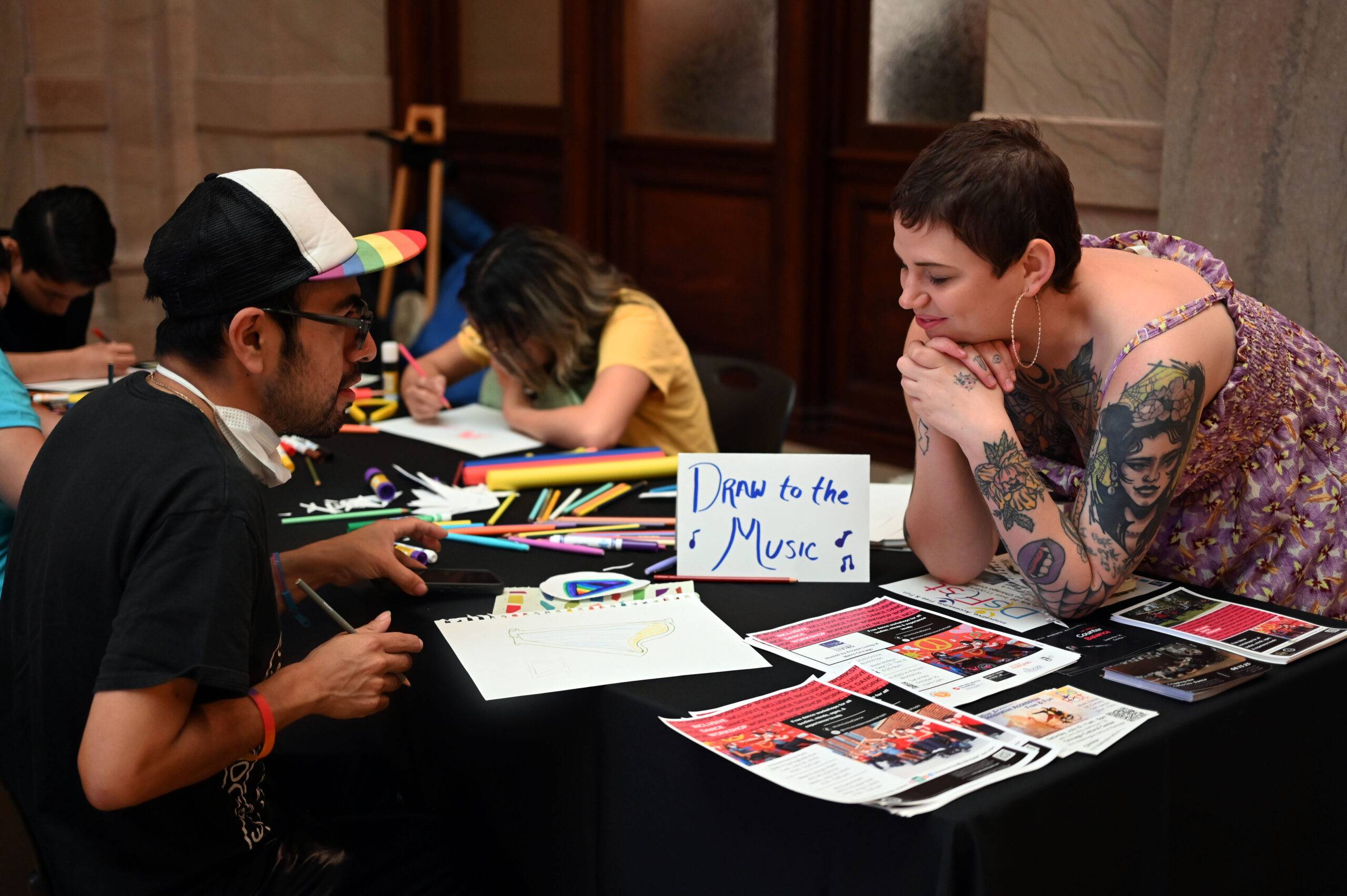
SAIC Lecturer and Alumi Katie O’Neil was overseeing the Draw to the Music activity table where festival-goers were given markers, crayons, colored pencils, stickers, and more to draw along with the live harp music playing in the room.
I truly look forward to seeing how DisFest will grow next year. Mark your calendars, it’s sure to be a fun ride whether you’re wheeling, walking, or Zooming in.





